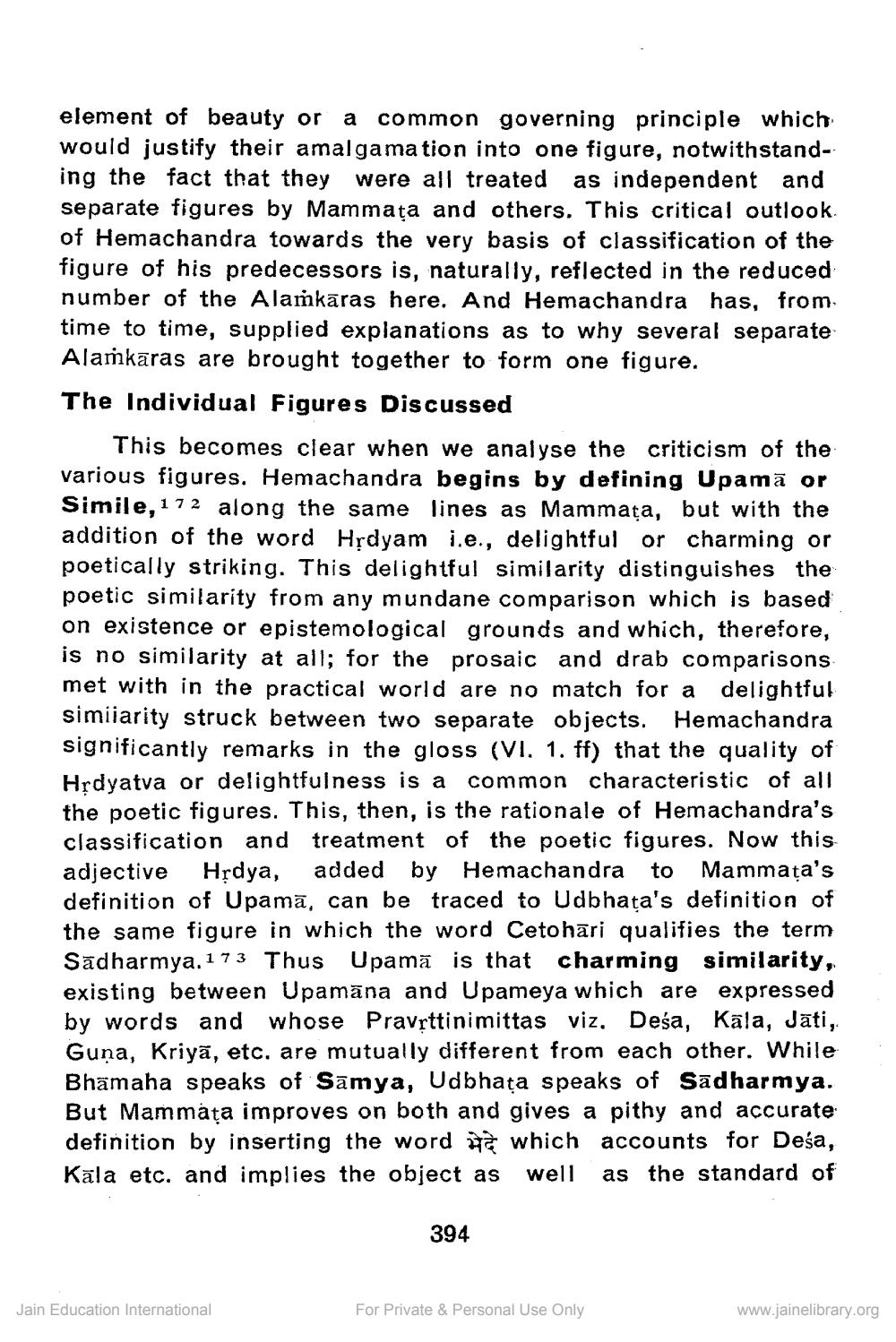________________
element of beauty or a common governing principle which would justify their amalgamation into one figure, notwithstanding the fact that they were all treated as independent and separate figures by Mammaţa and others. This critical outlook. of Hemachandra towards the very basis of classification of the figure of his predecessors is, naturally, reflected in the reduced number of the Alamkāras here. And Hemachandra has, from time to time, supplied explanations as to why several separate Alamkaras are brought together to form one figure. The Individual Figures Discussed
This becomes clear when we analyse the criticism of the various figures. Hemachandra begins by defining Upamā or Simile, 172 along the same lines as Mammața, but with the addition of the word Hidyam i.e., delightful or charming or poetically striking. This delightful similarity distinguishes the poetic similarity from any mundane comparison which is based on existence or epistemological grounds and which, therefore, is no similarity at all; for the prosaic and drab comparisons met with in the practical world are no match for a delightful simiiarity struck between two separate objects. Hemachandra significantly remarks in the gloss (VI. 1. ff) that the quality of Hrdyatva or delightfulness is a common characteristic of all the poetic figures. This, then, is the rationale of Hemachandra's classification and treatment of the poetic figures. Now this adjective Hrdya, added by Hemachandra to Mammața's definition of Upamā, can be traced to Udbhata's definition of the same figure in which the word Cetohāri qualifies the term Sādharmya. 173 Thus Upamā is that charming similarity, existing between Upamāna and Upameya which are expressed by words and whose Pravrttinimittas viz. Desa, Kāla, Jāti, Guņa, Kriyā, etc. are mutually different from each other. While Bhāmaha speaks of Sāmya, Udbhata speaks of Sadharmya. But Mammața improves on both and gives a pithy and accurate definition by inserting the word to which accounts for Desa, Kāla etc, and implies the object as well as the standard of
394
Jain Education International
For Private & Personal Use Only
www.jainelibrary.org




